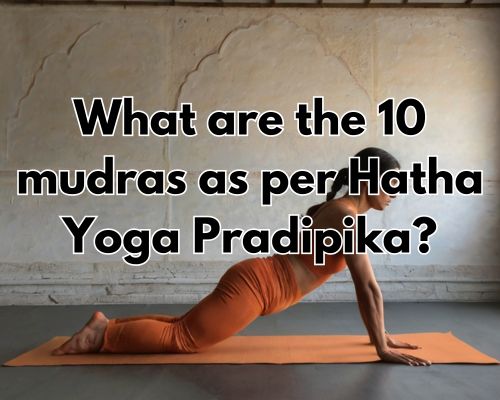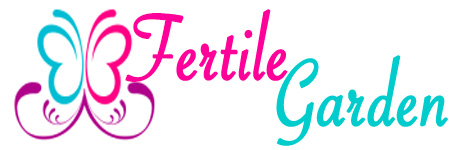What Are the 10 Mudras as Per Hatha Yoga Pradipika? A Deep Dive From Mornington, Australia
Hatha Yoga, one of the foundational branches of traditional yoga, offers a rich tapestry of spiritual and physical practices. Among its core teachings lies the ancient wisdom of mudras—symbolic gestures or seals used to channel energy within the body. If you’ve ever asked, “What are the 10 mudras as per Hatha Yoga Pradipika?”—you’re in the right place.

With Bikram Yoga Mornington, we’ll delve into the significance of these ten mudras as explained in the Hatha Yoga Pradipika, an iconic 15th-century Sanskrit manual by Swatmarama. Whether you’re a yoga instructor, wellness seeker, or spiritual practitioner in Mornington, Australia, this guide will not only satisfy your curiosity but also offer practical insights on incorporating these ancient techniques into your modern lifestyle.
Why Mudras Matter in Hatha Yoga
Mudras are subtle yet powerful techniques used to redirect pranic (life) energy, promote concentration, and activate chakras. Within the context of Hatha Yoga, they are employed alongside asana (posture), pranayama (breath control), and bandhas (body locks) to deepen meditation and awaken kundalini energy.
The Hatha Yoga Pradipika outlines ten primary mudras, each holding a specific role in spiritual awakening and physical purification.
The 10 Mudras According to Hatha Yoga Pradipika
1. Maha Mudra (The Great Seal)
Purpose: Balancing prana and apana, awakening kundalini
Practice: Involves stretching one leg forward, applying the chin lock (Jalandhara Bandha), and directing the gaze inward.
Insight: Often practiced before meditation, Maha Mudra tones the spinal nerves and supports longevity—perfect for those experiencing back stiffness in the cooler Mornington mornings.
2. Maha Bandha (The Great Lock)
Purpose: Unifying all three bandhas—Mula, Uddiyana, and Jalandhara
Practice: Performed during breath retention (kumbhaka) to redirect energy upward.
Insight: This is especially useful for practitioners managing stress or anxiety, as it calms the nervous system and stabilizes the mind.
3. Maha Vedha Mudra (The Great Piercing Mudra)
Purpose: Piercing granthis (psychic knots) and elevating prana
Practice: Performed after Maha Mudra and Maha Bandha, includes gentle body thrusts while seated.
Insight: Traditionally used to stimulate the chakras, this mudra is ideal for enhancing vitality during Mornington’s cooler seasons when energy can feel stagnant.
4. Khechari Mudra (The Sky-Walking Seal)
Purpose: Redirecting awareness inward and upward
Practice: Involves curling the tongue back into the nasal cavity
Insight: Though advanced, Khechari is said to transcend hunger and thirst, a nod to the yogic control over the senses. Many yogis in Victoria’s spiritual communities explore this as a gateway to deeper states of samadhi (meditative absorption).
5. Uddiyana Bandha (Abdominal Lock)
Purpose: Rousing the inner fire, enhancing digestion
Practice: Drawing the abdominal muscles inward and upward during exhalation
Insight: Commonly taught in yoga studios around Mornington, this technique supports detoxification and strengthens the core muscles.
6. Mula Bandha (Root Lock)
Purpose: Stabilizing the energy at the base of the spine
Practice: Contracting the perineum to contain and redirect prana
Insight: This is often the first bandha learned and is deeply grounding—an excellent practice for those with high levels of mental restlessness.
7. Jalandhara Bandha (Throat Lock)
Purpose: Preventing prana from escaping upward, regulating the thyroid
Practice: Tucking the chin toward the chest during breath retention
Insight: Many pranayama practitioners in Australia use this bandha to deepen breathwork and enhance focus, especially useful in retreat settings near Mornington Peninsula’s serene coastlines.
8. Viparita Karani Mudra (The Inverted Seal)
Purpose: Reversing the flow of energy
Practice: A semi-inverted posture, often confused with a restorative pose
Insight: A go-to for anti-aging and vitality, this mudra promotes circulation and soothes the nervous system, making it a favorite among older yoga students in Mornington.
9. Vajroli Mudra (Thunderbolt Gesture)
Purpose: Controlling and conserving sexual energy
Practice: Involves pelvic muscle control and subtle contraction techniques
Insight: Often considered esoteric, Vajroli is respected for its potential in preserving ojas—the essence of vitality. Teachers at Mornington’s traditional Hatha schools treat this mudra with cultural sensitivity.
10. Shakti Chalana Mudra (Movement of the Shakti Energy)
Purpose: Awaken kundalini and cleanse nadis
Practice: Combines Bhastrika pranayama, Mula Bandha, and Khechari
Insight: Seen as an integrative mudra, it unifies breath, movement, and mental focus. Best learned under a trained teacher—available in Mornington’s specialized yoga therapy centres.
See Bikram Yoga Mornington for more.
Local Context: The Rise of Traditional Yoga in Mornington, Australia
In Mornington, yoga isn’t just a fitness trend—it’s becoming a path to holistic living. Studios like The Yoga Room Mornington and Peninsula Hot Springs Yoga Pavilion now incorporate traditional Hatha practices, including bandhas and mudras, into their offerings.
As the Mornington Peninsula attracts a growing wellness-conscious population, there is rising interest in ancient yogic traditions like the Hatha Yoga Pradipika. Retreat centres often combine mudra workshops with detox programs, sound healing, and meditation immersions.
For locals seeking depth beyond flow classes, exploring these ten mudras can be a profound journey—enhancing mental clarity, energy alignment, and spiritual balance.
Integrating the 10 Mudras into Modern Practice
For those new to mudras, it’s recommended to:
- Start slow with foundational mudras like Mula Bandha and Uddiyana Bandha
- Practice with guidance—Mornington offers certified Hatha Yoga teachers
- Incorporate breathwork to enhance the efficacy of mudras
- Remain consistent to experience energetic shifts over time
Mudras are subtle but potent. Their consistent practice can lead to greater self-awareness, improved digestion, reduced stress, and awakened spiritual insight—aligning body, mind, and spirit in harmony.
Final Thoughts: A Mornington-Based Path to Yogic Mastery
So, what are the 10 mudras as per Hatha Yoga Pradipika? They are time-tested energetic seals designed to transform the subtle body and elevate consciousness. From Maha Mudra to Shakti Chalana, each carries a deep purpose rooted in tantric tradition and yogic physiology.
If you’re based in Mornington, Australia, you’re uniquely positioned. With access to serene natural landscapes and a vibrant wellness community, there’s no better place to explore the wisdom of Hatha Yoga in its authentic form.
Consider this your invitation to step beyond the mat. Embrace these sacred mudras—not just as physical techniques—but as gateways to inner alchemy.


